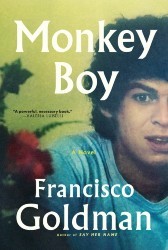The WASPs have the Adamses, the Irish have the Kennedys, and the Jews have the Morgenthaus (“morning dew” in German). New York City mayor Ed Koch noted that this family was “the closest we’ve got to royalty in New York City.”
Andrew Meier has written an extremely readable history of four generations of Morgenthaus. Lazarus Morgenthau arrived in New York from Germany with his wife and children in 1866. His son Henry (originally Heinrich), who made a fortune in New York City real estate, was a major financial backer of Woodrow Wilson’s 1912 presidential campaign and served as the American ambassador to the Ottoman Empire. His grandson, Henry Jr., was Secretary of the Treasury from January 1934 to July 1945; and his great-grandson, Robert M., was a World War II war hero, the United States Attorney for the Southern District of New York from 1962 to 1970, and the District Attorney of New York County (Manhattan) from 1975 to 2009.
The Morgenthaus were part of “Our Crowd,” a tightly knit group of wealthy German Jewish families in New York City. The family’s relatives by marriage included Lehmans and Wertheims, and one of Henry’s granddaughters was the prominent historian Barbara Wertheim Tuchman. Henry was close to Adolph Ochs, the publisher of the New York Times and one of the most important members of the German Jewish elite.
The section about Robert is the longest in the book and, arguably, the most interesting. He locked horns with many of the city’s most notorious miscreants, including gangsters Joseph “Joe Bananas” Bonnano, Joe Gambino, John Gotti, and Tommy Lucchese, as well as political kingmaker Carmine De Sapio, lawyer Roy M. Cohn, Supreme Court justice Abe Fortas, and real estate magnate Donald J. Trump.
Henry Morgenthau and his descendants had a strained relationship with Jewish matters. Henry was a fierce opponent of Zionism (Meier writes that he was “America’s foremost anti-Zionist”), fearing that it raised embarrassing questions about the ultimate political loyalty of the country’s Jews. Beginning with Lazarus, the Morgenthaus spurned the ritualistic elements of Judaism and attended seders and other Jewish events infrequently. They preferred to gather together for family occasions on Easter and Christmas and did not hesitate to intermarry. Meier notes that the funeral of Robert at Temple Emanu-El in 2019 featured the organ prelude to Beethoven’s Ninth Symphony but no recitation of the Kaddish, and only a few words in Hebrew.
Yet despite their seeming indifference to all things Jewish, the Morgenthaus played an important role in twentieth-century Jewish history. Henry, while serving as ambassador in Constantinople, sought to ameliorate the condition of Jews in Turkish-controlled Palestine. Henry Jr., as Secretary of the Treasury, was the State Department’s strongest critic of the fate of European Jewry during the 1940s, and was instrumental in the creation of the War Refugee Board. (Meier exaggerates when he writes that the WRB saved the lives of 200,000 Jews.) Robert was a strong supporter of Israel and a friend of Ariel Sharon. He headed the Museum of Jewish Heritage in New York City and prosecuted cases against the Alavi Foundation — a front for laundering money for Iran in the United States — and against a dozen or so banks for violating sanctions on Iran. These suits were successful: the banks forked fourteen billion dollars over to the United States government.
Ultimately, the Morgenthaus served well both the United States and the Jewish people.



